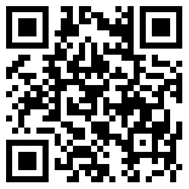符号在你的图形设计工具包中是一个强大的资产,但你必须知道如何正确使用它们。Carl Rylatt以UnitedUs最近的一个客户项目为例提供了一些建议。跨越文化、语言和国家的界限,没有什么比符号更强大的了。只要问问苹果、壳牌、百事可乐和其他公司,无论你身在何处,拥有一个能立即传达其品牌和价值观的全球标志是多么强大。品牌代理公司UnitedUs的设计总监Carl Rylatt最近在剑桥医疗保健研究中心的一个主要客户项目中实践了这一原则。在这里,他向我们讲述了在一个以不断变化的技术平台、信息过载和我们的注意力持续时间缩短为特征的世界中,在品牌激活中使用符号的好处,以及他如何将这些原则应用于日常客户工作中。什么是符号?我们从显而易见的开始:在品牌的背景下,我们所说的符号到底是什么意思?“简单地说,标志是一个词,而符号是一幅画,”卡尔解释说。然而,符号不同于符号,因为符号往往更具文字性和信息性。相反,符号包含意义,有时含糊不清,可以被观察者感知。“这反过来又在符号和观众之间建立了一种互动关系,人们的大脑试图解释这些符号,从而将它们嵌入记忆中,并与它们所代表的品牌建立联系。”换句话说,一个符号是否有效很大程度上取决于它所处的环境和更广泛的社会。“符号是自身与观察者之间的对话,如果能引起足够的共鸣,就能成为文化的附属品,得到普遍承认和认同。”剑桥医疗研究剑桥医疗研究剑桥医疗研究再一次,这强调了符号与符号和图标的区别。卡尔说:“后者旨在成为信息工具,对它们所代表的事物或它们想要交流的指令进行更多的文字描述。”“符号对它们来说更神秘,因此点燃了符号与受众之间的关系,最终导致与符号的更强联系,以及它所代表的品牌。



























Symbols are a powerful asset in your graphic design toolkit, but you must know how to use them correctly. Carl Rylatt offers some pointers with reference to a recent client project at UnitedUs. Written by: Tom May 12 June 2023 Cutting across cultural, linguistic and national boundaries, there's nothing more powerful than a symbol. Just ask Apple, Shell, Pepsi and others how powerful it is to have one global logo that instantly communicates their brand and values wherever you are in the world.Carl Rylatt, design director at brand agency UnitedUs, has been putting this principle into practice recently in a major client project for Cambridge Healthcare Research. Here he chats to us about the benefits of using symbols in brand activation in a world characterised by ever-changing tech platforms, information overload and our dwindling attention spans, and how he puts these principles into action in daily client work.What is a symbol?We start with the obvious: what exactly do we mean by a symbol within the context of branding? "Simply put, a logo is a word, and a symbol is a picture," Carl explains. "Symbols differ from signs, though, in that signs tend to be more literal and informative. In contrast, symbols contain meaning, sometimes ambiguously, which can be sensed by the observer. "This, in turn, creates an interactive relationship between the symbol and the viewer in that one's mind tries to interpret the symbols, thus embedding them in memory and making associations with the brands they represent."In other words, whether a symbol works is very much a product of the context and broader society in which they appear. "Symbols are conversations between themselves and the observer, which, if resonant enough, can become cultural collateral, universally acknowledged and identified with." Cambridge Healthcare Research Cambridge Healthcare Research Cambridge Healthcare Research Again, this highlights how symbols differ from signs and icons. "The latter are intended to be informational tools which are more literal depictions of the things they represent or the instructions they wish to communicate," says Carl. "Symbols have more mystery to them and therefore ignite a relationship between the symbol and its audience, leading ultimately to stronger associations with the symbol, and what it represents for the brand it's been created for."A simple visual cueTo highlight how all this works in practice, Carl points to a recent client project for Cambridge Healthcare Research, a leading healthcare and life science research body in the UK and the US. The organisation is known for its rigour and academic excellence. UnitedUs wanted to convey this message with a simple visual cue that could be utilised efficiently across various media. Cambridge Healthcare Research Cambridge Healthcare Research Cambridge Healthcare Research "For this, we used the square bracket citation device used in academic paper writing, which shows the rigorous approach and in-depth verifiable knowledge that academic writing demands," explains Carl. "This device perfectly encapsulated the tagline of 'the power of knowing' for CHR. It provides a simple, recognisable symbol that continuously signifies to the observer that everything CHR do is thoroughly researched."They also employed a secondary asterisk device in the designs. "This again shows that with CHR, there is always more detail to be found behind the language, more insight and more value," says Carl. "These devices position CHR as an organisation to trust as the device which shows thoroughness in academia is deeply embedded in their identity." Abstracting the 'O' in SolciCarl adds that the two partner brands to CHR also use symbols to communicate their brand messages, although at different levels of abstraction. First up comes Solici. "This is CHR's strategic competitive intelligence division, so it still operates under the unifying theme of 'The power of knowing'," explains Carl. "In this case, however, we added the tagline 'bringing opportunity to light', which both references the sun motif in the name and suggests that Solici's strategic insight will find the opportunities to give their clients the competitive edge that others cannot. Solici Solici Solici Solici By abstracting the 'O' in Solici, UnitedUs created a device that can be viewed as a literal representation of the sun but also as a point of focus or interrogation, a microscopic lens or a window through which opportunity is brought to light. "We then abstracted this simple device further," says Carl, "by making it a container that could contain a three-tier system of imagery. The first being the 'light' that Solici shines on their subject, represented by spectrums of light. The second being the surface that has been revealed by that 'light'; the detail uncovered by microscopic imagery. And the third: a more abstract, mystical representation of 'the beyond', suggesting that it is here that Solici's insight penetrates beyond what is already known and into the realms of the undiscovered and unique." Vox.BioThe other partner brand in this project was Vox.Bio, CHR's market research division. "Vox.Bio also uses symbols, but in this case, ones aligned to a particular brand message," explains Carl. This involved "creating a suite of interchangeable symbols based on the idea of the 'X' in Vox.Bio being an 'x marks the spot' motif," he adds. "With the multiple iterations of this motif, coupled with the flexible strap-lines, the symbols can convey a wide range of meaning and form a flexible system to communicate a range of ideas." Vox Vox Vox Symbols in graphic designUnitedUs' work for Cambridge Healthcare Research highlights how useful symbols are to graphic designers and why they have played an important role in so many great projects. "I'm a big fan of the work Wim Crouwel did at Total Design," says Carl. "His logo and symbol work pretty much established the modern method; he was similarly successful like Kubrick was with 2001: A Space Odyssey, in that he managed to create a graphic language of typographic and symbolic language that was ultramodern but not 'futuristic'. As a result, in both examples, the work hasn't dated. The influence of Wim Crouwel's grid-based, ultra-minimal, single-colour approach to the mark is still evident today. "And still, for me, it represents a gold standard of how to approach symbol design," says Carl. "After all, with new tech enabling us to create more complex, more colourful, more detailed work, isn't it simplicity that will stand out? "I'm just as happy working in a maximalist mindset as I think some of the studio's output shows, but when it comes to the symbol, something that can be easily recognised, understood, adopted, and in the end, loved by its audience, I think the old principles still hold sway. You could do a lot worse than starting here."









